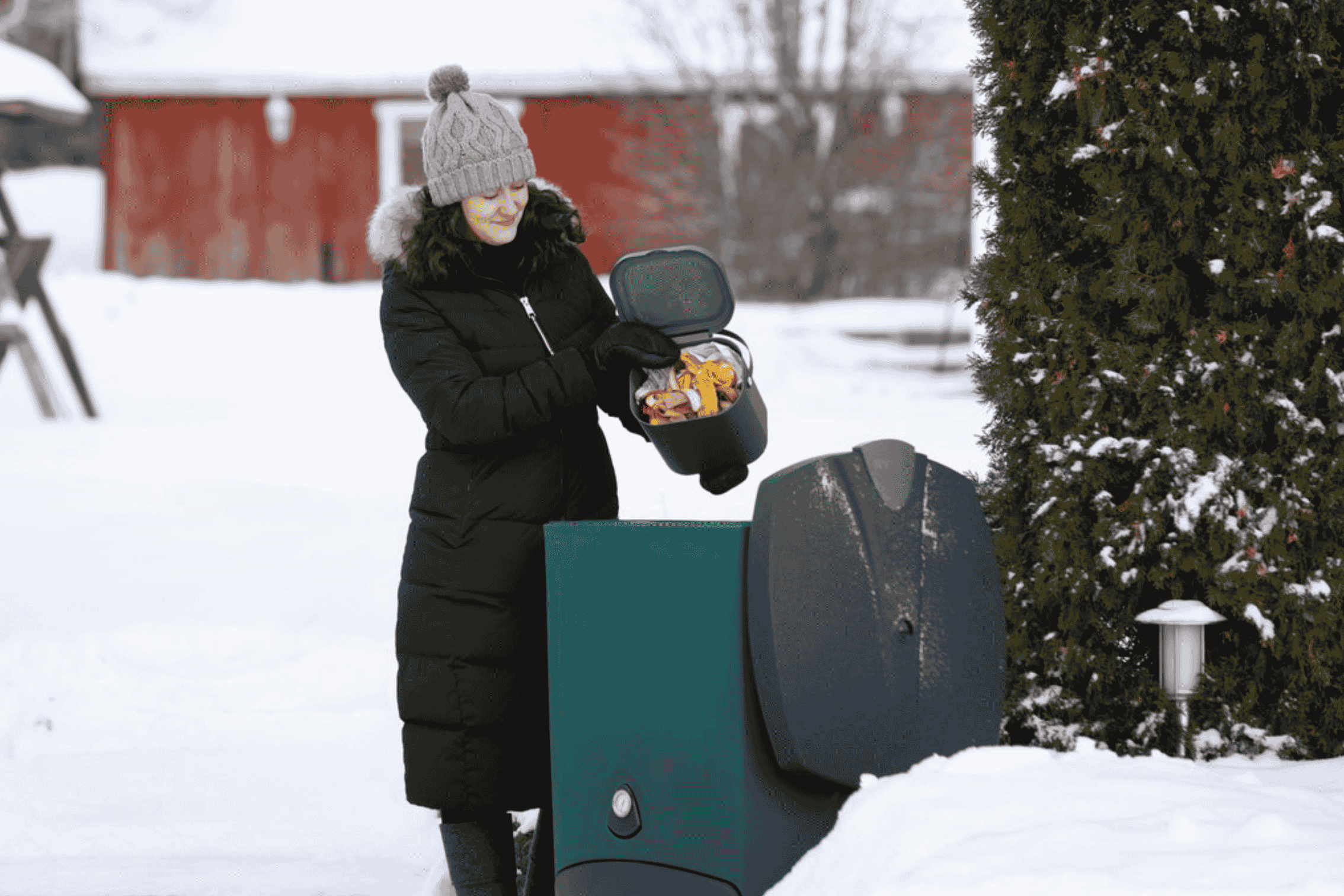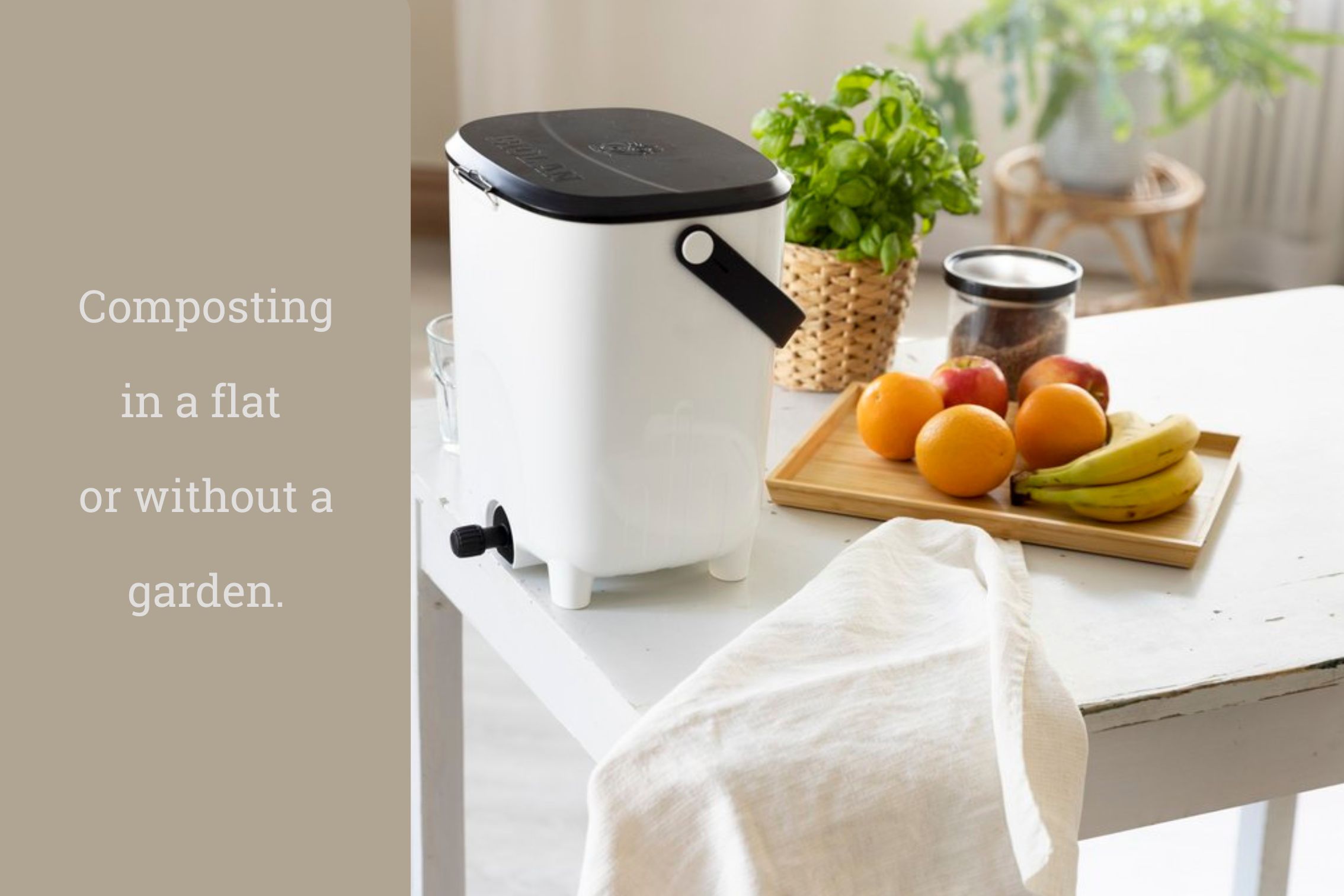
What Do I Do With Waste from a Composting or Dry Toilet?
Learn how to safely process and re-use waste from dry and composting toilets, turning it into eco-friendly compost or garden fertiliser.
Composting and dry toilets are an increasingly popular choice across the UK for those looking to reduce water use, live off-grid, or make their homes and holiday sites more environmentally friendly. These waterless systems are easy to use, require minimal maintenance, and are designed with sustainability in mind.
However, one of the most common questions new users ask is: What do I actually do with the waste?
In this blog, we’ll walk you through how to handle, process, and reuse waste from both composting toilets and dry toilets, using guidance from Biolan’s tried-and-tested models: the Simplett, Simplett Plus, and "eco" Composting Toilet
First, Let’s Understand the Types of Toilets
Dry Toilets like the Biolan Simplett and Simplett Plus do not contain any internal composting mechanism. Instead, they simply collect solids and liquids (separately), and the solid waste is transferred to an external composter such as the Biolan Quick Composter 220eco to fully complete the composting process.
Whilst many dry toilets listed online claim to be “composting toilets” - they actually aren’t. They are simply waste separators and collectors. Proper composting needs time, heat and bulk to convert a waste product into usable compost - and dry toilets do not provide these conditions. They are simply the first step in the process - but read on for more details.
Composting Toilets such as the Biolan eco Composting Toilet are thermally insulated units that physically produce compost inside the toilet itself, turning waste into humus (a soil-like substance) over time. These are designed to be emptied less frequently and work well in year-round use. The thermal insulation is the key - double walls with insulation between them, create the heat you need for the composting process to be successful.
What Happens to Solid Waste?
1. In Dry Toilets (Simplett & Simplett Plus)
Solid waste is collected in a removable plastic container with a carrying handle - usually 28-30 litres in capacity. You can use a biodegradable liner bag in the container to make emptying cleaner and simpler, or pad out the container with newspaper at the bottom. When full, the bag and container contents are transferred to an external composter for further processing. This will take some time.
It’s important not to compost the contents directly into the ground or in your garden without proper treatment. Human waste needs time to break down safely to eliminate pathogens.
Once the waste is in a compost bin:
- Add a bulking material to maintain the right balance for aerobic decomposition, and to reduce odours.
- Turn the contents regularly and keep the pile moist (but not too wet) to encourage breakdown.
Leave the compost for at least one year before using it. When fully matured, it should be dark, crumbly, and odour-free, very similar to soil.
It’s advisable to only use composted human waste around trees, shrubs, or ornamental plants, rather than directly on fruit or vegetable beds, unless local guidance permits.
2. In the Composting Toilet eco
This toilet model is designed to carry out the composting process inside the unit. Thanks to its insulated structure, the composting process can continue all year-round - even during damp and cold UK and Irish winters.
- Use a spade to scoop out the matured compost from the hatch at the base of the unit.
- Use the compost as top soil (from 6-8 weeks) or compost for a further 6 months to produce mature compost material.
You may need to transfer to an additional container if the quantities of waste you are treating exceed the composter's capacity.
It’s recommended to only remove the compressed, composted contents up to the top of the service hatch, to ensure the composting process (above) remains active.
What About Liquid Waste?
Both dry and composting toilets separate liquid waste (mainly urine) from solids but in different ways. Managing this part of the waste “stream” is just as important.
How to Handle Urine / Seep Liquid
- In the Simplett and Simplett Plus, urine is collected in a separate canister (usually outside of the toilet cabin / hut). Canisters are typically 10 litres in volume and should be emptied every few days depending on use. Remember, if we all drink about 2 litres of liquid per day then this is roughly the amount of liquid that will come out as urine.
- In the Composting Toilet urine passing through the composter will generally evaporate, but any excess “seep” liquid will collect at the bottom of the composter underneath a specially designed seepage plate, and will then transfer to a separate canister, which also needs to be monitored and emptied periodically.

Options for Disposal or Reuse:
- Reuse in the Garden:
Urine is rich in nitrogen and can be a fantastic fertiliser when diluted 1:10 with water (one part urine to ten parts water). Apply it around ornamental plants, shrubs, or trees - not edible crops, unless it has been stored safely for several months. - Soakaway System: In off-grid setups, a soakaway or reed bed system can be used for urine disposal. Always follow local environmental guidance.
- Mains Disposal: Where possible, the liquid can be poured into a standard toilet or blackwater outlet.
It’s advisable to empty the liquid containers before freezing weather arrives, as the build-up of frozen liquid can damage the pipe or liquid collection container.
How to Stay Hygienic
Handling waste from a composting or dry toilet is surprisingly clean when done correctly. Here are some basic hygiene tips to follow:
- Always wear gloves when emptying containers.
- Wash your hands thoroughly with soap afterwards.
- Use biodegradable liners in dry toilets to make the process easier and reduce the need for frequent cleaning.
- Clean toilet surfaces regularly with natural or mild detergents - please avoid harsh chemicals: tempting as they are, they will disrupt the natural composting process as they kill both good and bad “bugs.”
- Keep the toilet well-ventilated to minimise odours and support the composting process.
When Is the Waste Ready to Use?
- Solid waste needs time to mature. For compost from dry toilets, wait at least 12 months before using it.
- Liquid waste (urine) can be used sooner, especially if diluted. However, if unsure, store it for at least 3 months before applying to soil.
Remember: when using any compost made from human waste, always err on the side of caution and avoid using it near edible plants unless fully composted (typically 12 months) and legally permitted.
Disposing of waste from a composting or dry toilet isn’t difficult - it just requires a little planning and respect for the process. Whether you’re using the Biolan Simplett, Simplett Plus or Composting Toilet eco, the key is knowing how to handle both solids and liquids safely and sustainably.
Once you get into a routine, you’ll find that managing waste this way is not only hygienic and manageable, but also fulfilling- turning waste into something useful for your garden while reducing your environmental impact.
Further reading and useful links
Blog -Do composting or dry toilets smell?
Blog - How do you empty a dry or composting toilet - is it hygienic?
OTHER POSTS IN THIS CATEGORY:
.png)
The Biolan 220eco composter handles all food waste, including cooked scraps, all winter. Use bulking material for perfect, odour-free compost

Yes, you can compost in winter! Learn how to keep your bin active during the UK's cold months with tips, tools, and winter-ready composters.

Tired of smelly bins? Learn how to compost in your flat usingan indoor Bokashi bins, and turn your scraps into garden gold - even without a garden.

Find out how often to turn your compost, why it matters, and simple tips to boost breakdown and reduce smells in your garden bin.

Keep pests out of your compost bin with smart tips on what to add, how to balance materials, and ways to seal and protect your setup year-round.
.png)
Insulated aerobic composters speed up decomposition, manage odour, and work all year. Learn how they retain heat, regulate airflow, and simplify compo



